PEX is a new and flexible plumbing system that can eliminate the need for old and rigid CPVC plumbing systems. In this system, compression fittings are used to connect pipes which is totally different from the gluing process of CPVC.
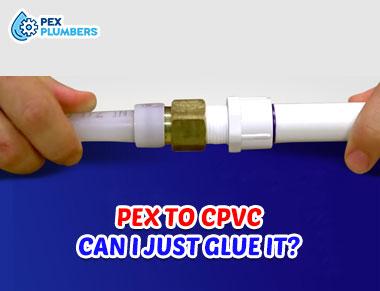
And if you ask can I glue PEX to CPVC? Unfortunately, no. You can’t glue it.
You can’t even connect PEX pipes to CPVC as there are no compression fittings for CPVC.
Let’s find out more about these two plumbing systems to differentiate them and choose the right one for your purpose.
Here you go.
What is PEX?
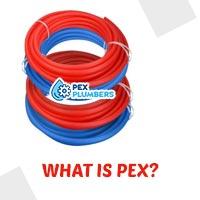
PEX is the industrial name for cross-linked polyethylene. It is a flexible plastic that is being used in water supply systems across the globe. Polymer molecules of polyethylene are cross-linked to produce this special plastic.
High flexibility is the most crucial characteristic of PEX piping. It is also very durable. So, the popularity of PEX plumbing is increasing. It has become a very good alternative to copper and galvanized steel.
The price of PEX piping is a lot less than copper or galvanized steel pipes. The latter two are prone to corrosion and mineral buildup. But PEX is highly corrosion-resistant.
PEX is highly suitable for use in hot water supply systems due to its high thermal conductivity. As a result, heat loss during the supply will be reduced.
As the diameter of PEX pipes is smaller than that of a copper or steel pipe, the water pressure will be higher.
NOTE: Here is a detailed article about PEX pipe that you may take a look at.
Types of PEX Connection
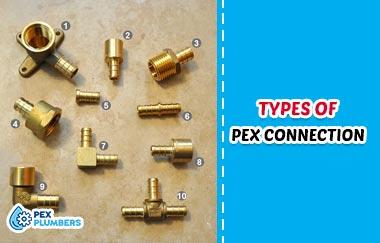
There are several methods for connecting PEX tubes. Here are the six most popular connection types used for the PEX plumbing system.
Crimp Connection
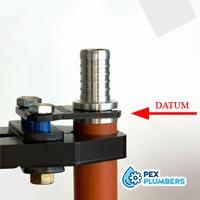
Crimp fittings are used in this type of connection. These fittings are mostly made of brass or poly-alloy. To join two tubes with these fittings, you will need copper or steel crimp rings along with a proper crimp tool.
Compression Connection
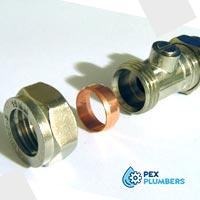
This is probably the simplest type of connection between two PEX tubing. The compression fitting is made of a nut, a ring, and an insert.
You need to insert these fittings into both ends of the tubes you will join. Once you tighten the nut, the compression ring is pressed, and the tubes get secured.
Relevant post >> CPVC Vs PVC Glue: What’s The Actual Difference?
Clamp Connection
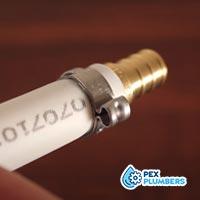
Clamp connection refers to joining two PEX tubes with the help of clamp rings. The rings are placed onto the ends of the tubes and pressed by clamping tools.
Read Also: Difference Between PEX Crimp and PEX Clamp
Push-Fit Connection
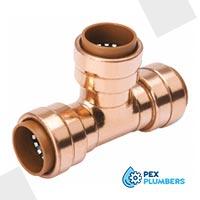
You don’t need any tool to connect two PEX tubes in this method. A special type of fittings called push-fit fittings is used on both ends of the tubes. You just need to insert the end of the tube into the fitting, and it snaps in place.
Press Connection
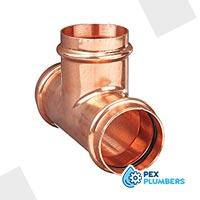
Press connection uses press fittings that come with sleeves. Once the PEX tube is inserted into the press fittings, a press tool is used to tighten the fitting.
Relevant post >> PEX Expansion Vs Crimp
Expansion Connection
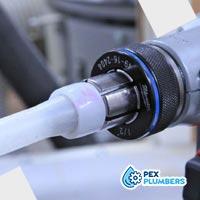
A special PEX expansion tool is required for this method. Once expanded, PEX tubes are fitted with brass expansion fittings.
What is CPVC?
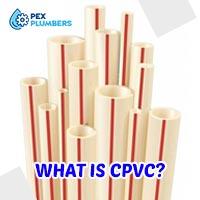
CPVC stands for Chlorinated Polyvinyl Chloride. It is a special kind of plastic that is used to make pipes and fittings for water supply systems, drainage, sewage, HVAC, etc. CPVC pipes can handle high temperatures up to 200 degrees Fahrenheit.
The working pressure of CPVC varies from 450-630 PSI, while the tensile strength is 8200 PSI. This is much greater than PVC pipes. So, CPVC pipes are commonly used in commercial and residential infrastructures.
CPVC is highly corrosion-resistant, but it can get brittle over time.
Types of CPVC
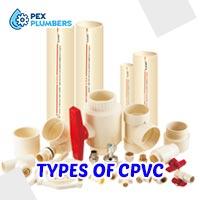
CPVC pipes are of two types.
- Schedule 40 CPVC
- Schedule 80 CPVC
According to ASTM standards, schedule 40 CPVC pipes are suitable for residential plumbing systems. These pipes have a lower wall thickness and hence can withstand lower pressure.
Schedule 80 pipes have a higher wall thickness and can withstand higher water pressure. As a result, they are more suitable for commercial purposes.
Schedule 40 pipes have a maximum working pressure of 450 PSI, while Schedule 80 CPVC pipes can withstand 630 PSI.
Difference Between PEX and CPVC
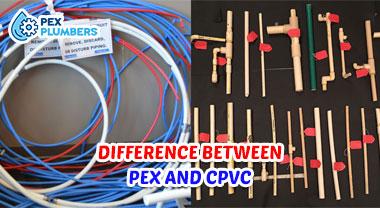
Here are the main differences between PEX and CPVC.
Chlorine Resistance
CPVC is inherently resistant to Chlorine so that it won’t degrade over time. But PEX can degrade due to the effect of Chlorine in some conditions.
Water Pressure
As CPVC fittings are attached to the outside of the tubes, the inner diameter of CPVC pipes remains the same. So, water can flow at maximum pressure through CPVC pipes.
But compression fittings are inserted into PEX tubes, which reduces their inner diameter. As a result, water flow can be reduced by about 35% in PEX plumbing systems.
Safety
CPVC is safer than PEX in terms of biofilm growth. The permeability of CPVC is also lower, which means it doesn’t let any contaminants enter the pipe.
Installation
Both these pipes are quite easy to install. You will need CPVC glue to join CPVC pipes, but no special tool is required in this case. But joining PEX tubes will require PEX fittings along with special tools.
Can I Glue PEX to CPVC?
It should be clear from the above discussion that PEX and CPVC are two completely different types of pipes. Fittings used for these pipes are also different. CPVC fittings are glued to CPVC pipes. But PEX pipes use PEX compression fittings to connect.
So, you can’t glue PEX to CPVC directly. You must connect PEX tubes using proper fittings and the right tools.
Final Thoughts
The flexibility of PEX tubes has made them an irresistible choice in plumbing systems. Though PEX connections are less versatile than CPVC connections, you can use PEX tubes in hard-to-reach regions.
Next time you worry about PEX to CPVC can you glue It or not then this article will tell you the key differences between these plumbing systems so that you can pick the most suitable option for your purposes.
MORE ON PLUMBING:
- 7 Picks of P Traps For Kitchen Sink
- Buying Guide of PEX Shower Valve
- Sanitary Tee Vs Wye: Know The actual Different

Hey! I’m Leanda Bailey. I’m here to explain every plumbing installation and repair you may have in your kitchen or bathroom. Also, I’ll try to find you the best products on the market for your plumbing work.

